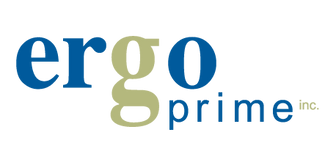Injury prevention boosts productivity and improves quality
Ergonomic hazards in your workplace can lead to costly injuries, lost productivity, and lower quality, all of which negatively impact the bottom line. Our expert ergonomics assessments give you the action plan you and your employees need right now to do away with injuries, errors, and inefficient work methods.
We offer three types of assessments:
- Industrial ergonomics risk assessment
- Physical Demands Analysis (PDA) / Job Demands Analysis (JDA)
- Job coaching
Industrial ergonomics risk assessments
Improve your workplace for better health and higher performance
On-site ergonomics risk assessments for job tasks, workstations, and new or existing equipment identify ergonomic hazards, evaluate the risk of injuries, and assist in implementing ergonomic solutions. They’re an easy way to boost the health, well-being, and productivity of employees in industrial settings. Think of this ErgoPrime service as an investment to safeguard workers from preventable injuries, thereby reducing downtime.
How our industrial ergonomics risk assessments work
![]() ErgoPrime works with you to evaluate your specific work environment and identify hazards that can lead to expensive injuries and lost productivity.
ErgoPrime works with you to evaluate your specific work environment and identify hazards that can lead to expensive injuries and lost productivity.
![]() Together, we develop cost-effective solutions that improve effectiveness while keeping people safe.
Together, we develop cost-effective solutions that improve effectiveness while keeping people safe.
Customized solutions are integrated into daily operations to produce long-lasting results.
![]() Your ergonomics expert will send you a detailed report that includes specific recommendations to address ergonomic risks and safety issues.
Your ergonomics expert will send you a detailed report that includes specific recommendations to address ergonomic risks and safety issues.
Create a safer workplace and reap the rewards of happier, more productive workers.
Contact us to begin the process
Physical Demands Analysis (PDA) / Job Demands Analysis (JDA)
Help injured workers stay or return to work safely
The Physical Demands Analysis (PDA) / Job Demands Analysis (JDA) provides accurate measures of the physical and cognitive demands of a job.
PDA/JDA makes it quick, easy and reliable to:
- Determine job suitability for workers returning to work after an injury
- Identify modified and alternative duties for a worker with physical limitations
- Use job-matching to get a worker safely back to work sooner
- Give the Workplace Safety & Insurance Board (WSIB) valuable information to aid in return to work planning and claim adjudication
- Help identify ergonomic risks as part of an ergonomic assessment
How it works
- During a half to full day on-site session, the ergonomist interviews workers, supervisors and managers then photographs and measures essential job tasks such as lifting, carrying, pushing, walking, postures, etc.
- A report providing objective and detailed description of the job demands is provided. It includes a description of tasks, photographs, and quantitative measurements of job demands.
Discover the best job solutions for returning workers to protect them while enhancing their workplace effectiveness. Contact us for more details.
Ergonomic job coaching
Immediate and ongoing support for injured workers
One-on-one coaching when an employee returns to the workplace can address on-the-job performance barriers and give the individual confidence to do their job safely without fear of re-injury.
Our ergonomics coach works closely with the employee, management, and health care practitioners involved to address any challenges the employee may face.
How it works – The ergonomics professional’s role:
- Support and guide the worker and their employer in overcoming barriers and adapting to changes while progressing to a successful return to work
- Review the work environment, physical and cognitive job demands to help ensure the employee’s abilities are aligned with a realistic return to workplan
- Provide on-going coaching in safe body mechanics, work methods, pacing, work-rest schedules for safe graduated return to work
- Meet with the worker and employer as regularly as needed to ensure on-going progress in the graduated return to work
To find out more about Ergonomic Job Coaching, contact us today
